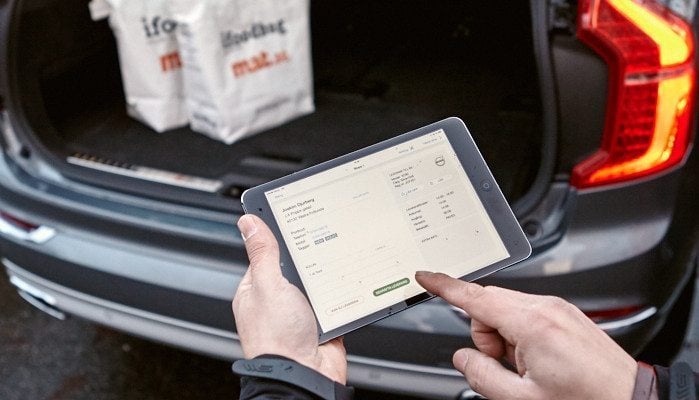Empowering field service engineers through mobile technology
Jun 23, 2016 • Features • Software & Apps • Zafire • Software and Apps
Chris Beling, Commercial Director at Zafire, looks at the connection between ‘empowering field service engineers’ and customer satisfaction and some of the business benefits those organisations, who have already made the connection, are experiencing...
Hands up if your customers don’t expect exceptional service anymore they demand it, if they expect you to exceed SLAs and not just meet them?
Fierce competition and evolving customer expectations mean that meeting SLAs, fixing assets and simply turning up on time don’t really do the job anymore.
Why empower your engineers?
We are now seeing more and more leading service organisations shifting focus from product to service and, by equipping their engineers with the right tools and knowledge many are seeing year-on-year improvements in customer satisfaction, which as you would expect, reflects in contract renewals, client retention and positive noise about the company and the brand.
According to recent reports published earlier this year the number one compliant made by customers is ‘technician was unable to resolve the issue’.
“The introduction and adoption of mobile solutions to empower your mobile workforce is not just about saving paper or improving the speed at which a work order is processed...”
Communication between back office and field service engineers via mobile devices and software applications has been around for years. The step change we are seeing comes from providing the engineer with real-time insight.
So rather than simply firing a job out to an engineer with the focus of arriving within the agreed SLA, service organisations need to ensure that the engineer not only gets on site with the customer on time but also has the parts, skills, and information to resolve the issue.
Of course it’s not just about engineers receiving data, it’s about enabling them to collect insight whilst on-site and feed that back into a central database allowing other areas of the service organisation to leverage that information and also provide added value for the customer.
This could be an update to asset information, not only identifying but also generating quotes or processing purchasing orders whilst on-site, with the customer or having direct access to parts suppliers.
How do you empower your engineers
Today, top service management solutions will provide enhanced engineer planning and optimisation tools that can automatically plan a job based on any number of parameters including SLAs, customer opening times, skill set etc.
They will also have the ability to auto plan multiple engineers to a single job whilst allowing the capture of individual times on site and eliminating double entry of data.
All aimed at getting the jobs/work orders allocated to the right engineer as quickly as possible.
"Top service management software providers understand the need to keep mobile solutions simple whist actually providing more functionality to support on-site real-time insight..."
More specifically top service management software providers understand the need to keep mobile solutions simple whist actually providing more functionality to support on-site real-time insight.
Key areas such as on-site quoting, allowing engineers to quote for, and customers to authorise work within a few quick steps eliminates the need for office staff to follow up on quotes, improving both first time fix rates and customer satisfaction.
At the risk of getting overly technical, direct system interfaces play a big part in ’empowering the engineer’.
For example, systems are now linking directly to 3rd party parts suppliers to provide ‘Live Part Lookups’ which means engineers can view the entire parts database, search for and order parts, and manage the requisition-to-receipt process from end-to-end allowing on-site ordering and receipt directly from the mobile device.
The ability to be reactive on site by using ‘Live Checklist Lookup’ functionality means that if the situations changes on site, engineers can reflect this in the paperwork they raise, decreasing time spent altering or changing job details or forms.
So the introduction and adoption of mobile solutions to empower your mobile workforce is not just about saving paper, reducing errors generated through manual processes or improving the speed at which a work order is processed.
It is also about giving your engineers the tools to adopt a truly customer centric approach on every job they attend.
And that customer centric approach will also lead to improved ‘first time fix rates’ and will help reduce downtime and loss of productivity for customers – things your customers really want their service organisation to deliver.




















 Field Service News is published by 1927 Media Ltd, an independent publisher whose sole focus is on the field service sector. As such our entire resources are focused on helping drive the field service sector forwards and aiming to best serve our industry through honest, incisive and innovative media coverage of the global field service sector.
Field Service News is published by 1927 Media Ltd, an independent publisher whose sole focus is on the field service sector. As such our entire resources are focused on helping drive the field service sector forwards and aiming to best serve our industry through honest, incisive and innovative media coverage of the global field service sector.
Leave a Reply